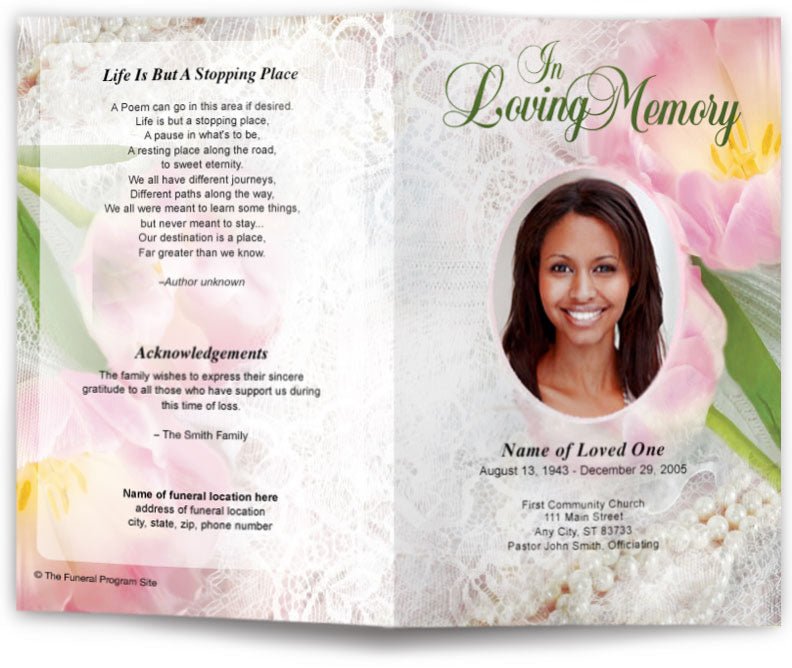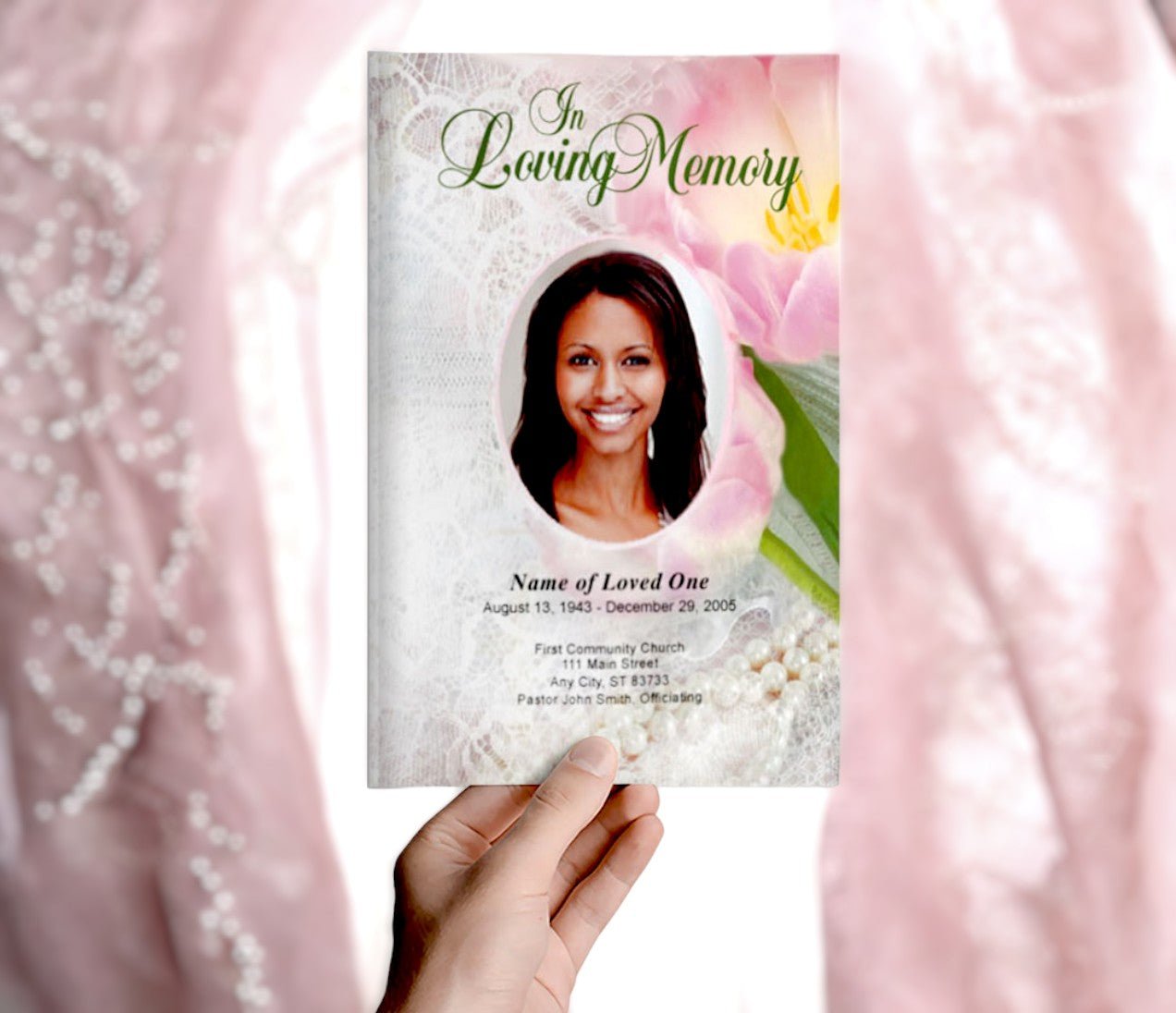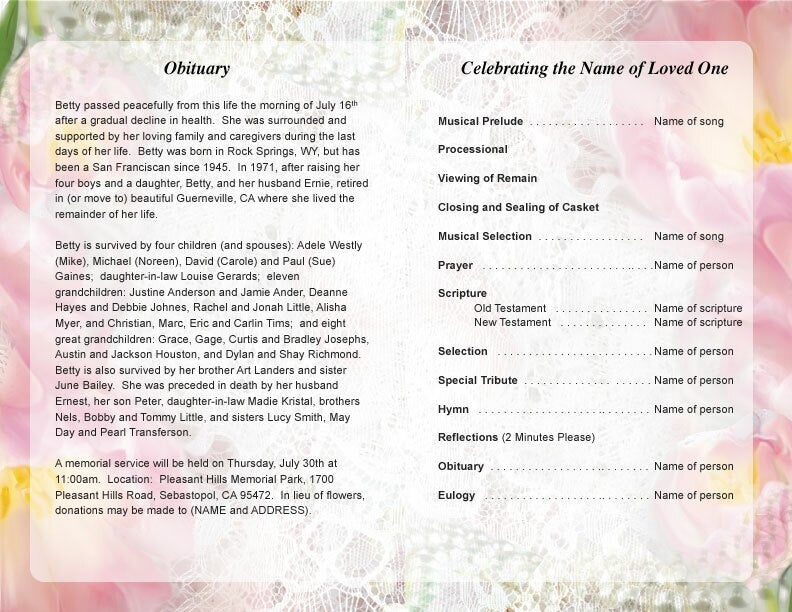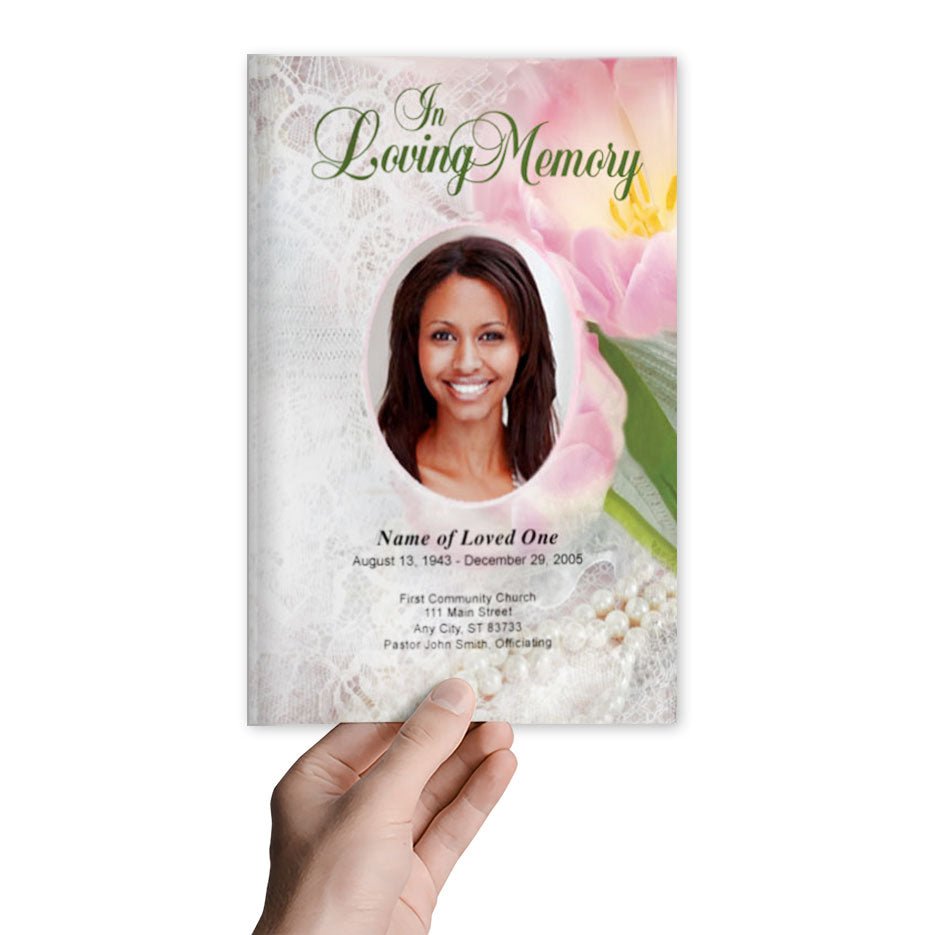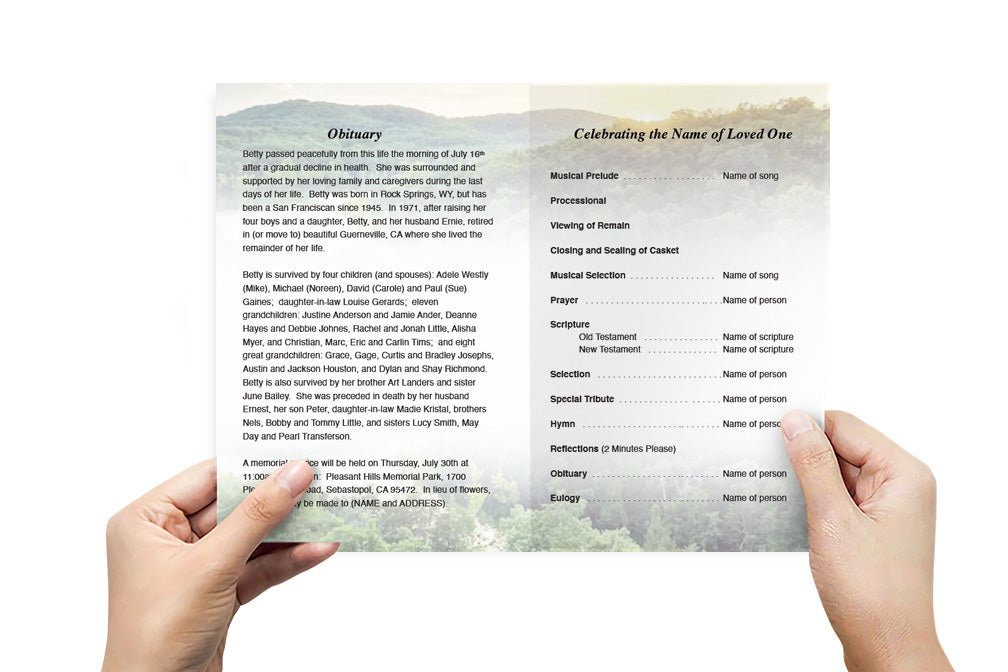How to Design a Funeral Program That Reflects the Deceased’s Personality

How to Design a Funeral Program That Reflects the Deceased’s Personality
A funeral program serves as a tribute to a loved one, guiding attendees through the service while preserving their memory. Rather than using a generic design, a personalized funeral program captures the unique essence of the deceased. By incorporating elements that reflect their passions, values, and personal style, you can create a meaningful keepsake that honors their life in a special way.
1. Choose a Funeral Program Format That Fits Their Story
The format of the funeral program sets the tone for how their story will be told. Choose a layout that aligns with the depth of detail and visual elements you want to include.
Bifold Funeral Program
A bifold design is the most common format, featuring four panels when folded. This is ideal for a simple yet elegant program that includes a photo, order of service, and a short biography.
Trifold Funeral Program
For a more detailed tribute, a trifold funeral program provides six sections for adding extra elements such as favorite quotes, multiple images, and personal reflections.
Graduated Funeral Program
A graduated or step-fold design features tabs that make each section visible, creating an organized, easy-to-navigate program. This works well for larger services with multiple tributes and readings.
Memorial Booklet
If the deceased had a rich life story, consider a memorial booklet with multiple pages. This format allows for a comprehensive life history, full-page photo spreads, and personal letters from family members.
2. Select a Theme That Reflects Their Personality
The theme of a funeral program should be deeply personal, reflecting their interests, values, and lifestyle.
Nature-Themed Funeral Program
For someone who loved the outdoors, consider using landscape imagery, floral accents, or a soft earth-tone palette to symbolize their connection to nature.
Religious or Faith-Based Design
If faith was central to their life, incorporate scripture verses, religious symbols (cross, dove, angel), and faith-inspired artwork.
Elegant and Classic Theme
For a timeless tribute, use black and gold elements, traditional serif fonts, and sophisticated layouts. This style reflects grace, dignity, and refinement.
Artistic and Creative Theme
If they were an artist, musician, or writer, use watercolor textures, hand-drawn elements, or musical notes to celebrate their passion for creativity.
Patriotic or Military-Themed Program
For veterans or service members, incorporate American flags, medals, or military insignias to honor their dedication to their country.
3. Choose Colors and Fonts That Represent Their Style
The choice of colors and fonts can significantly impact the feel of the program.
Color Psychology for Funeral Programs
- Blue – Represents peace, trust, and spirituality
- Green – Symbolizes renewal, growth, and nature
- Purple – Reflects wisdom, dignity, and honor
- Gold & Black – Creates an elegant, sophisticated feel
- Soft Pastels – Evoke warmth, love, and tenderness
Font Selection for a Meaningful Tribute
- Classic serif fonts (Times New Roman, Garamond) add a traditional and elegant feel.
- Script fonts (Great Vibes, Dancing Script) give a handwritten, personal touch.
- Modern sans-serif fonts (Montserrat, Lato) provide a clean and contemporary look.
4. Personalize with Photos and Meaningful Quotes
Selecting the Right Photos
Include high-quality photos that best represent their personality. Options include:
- A portrait for the cover (smiling, happy moment)
- Candid shots from family gatherings
- Wedding or milestone photos
- Images from their hobbies (gardening, painting, travel)
Adding a Favorite Quote or Bible Verse
A meaningful quote can enhance the tribute. Examples include:
- "Those we love don’t go away, they walk beside us every day."
- "Well done, good and faithful servant." – Matthew 25:23
- "Do not cry because it’s over, smile because it happened."
5. Organize the Content in a Thoughtful Way
A well-structured funeral program makes it easier for attendees to follow along. Include:
Front Cover
- Deceased’s name
- Birth and passing date
- Portrait photo
- Inspirational quote or scripture
Inside Pages
- Order of service (welcome, prayers, eulogies, music)
- Obituary or life story (brief biography highlighting their journey)
- Special tributes (written by family or friends)
Back Cover
- Acknowledgments and thank-you notes
- Details about burial or reception
- Final farewell message
6. Ensure Print Quality for a Professional Finish
Choosing the Right Paper Type
For a high-end look, use:
- Glossy cardstock for a polished, vibrant finish
- Matte cardstock for a softer, elegant feel
- Linen-textured paper for a refined, premium touch
Home Printing vs. Professional Printing
- Home printing – Suitable for small gatherings, using high-quality inkjet or laser printers.
- Professional printing – Best for large services with premium-quality finishes and durable paper.
7. Consider Digital Versions for Easy Sharing
For virtual services or distant family members, a digital funeral program can be shared via:
- Email or messaging apps
- Funeral home websites
- Social media memorial pages
8. Avoid Common Design Mistakes
- Using low-resolution images – Ensure photos are clear and well-lit.
- Overcrowding the layout – Leave white space for readability.
- Forgetting to proofread – Double-check all names, dates, and spellings.
9. Where to Find Funeral Program Templates
If you need a ready-made template, there are downloadable options available on:
- The Funeral Program Site
- Etsy (handcrafted templates)
- Canva (editable online templates)
10. Final Thoughts
Designing a funeral program that reflects your loved one’s personality and legacy is a deeply meaningful task. By choosing the right format, colors, images, and personal elements, you create a tribute that celebrates their life beautifully. Whether printed or digital, the most important part is that it feels true to their spirit and offers a sense of comfort and remembrance to those who receive it.










